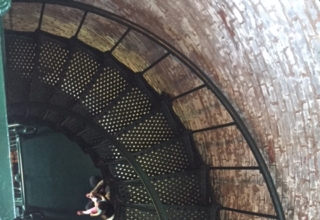
Our body predicts and anticipates this change. Adjustments are made that enable us to live in a cooler environment. The baseline has changed. A new level of homeostasis might be established with a change in the thermostat, but this is a secondary adjustment. Settings on the thermostat will (or may) remain in place until the Spring, while the clothes we wear and the windows we open will make a bigger, more immediate difference. We can do a better job of meeting our Essential goal of reducing heating costs by wearing a sweater or closing the window than by moving the thermostat up a notch.
We alter our ways of adjusting to (and buffering) the impact of shifting conditions. Our craftsman reports in sick. We can do nothing and hope that our craftsman will quickly recover. Perhaps we recommend that he see a doctor or consume some chicken soup. We might engage in wishful thinking about his quick recovery or the healing power of chicken soup. Our errant prediction, in this case, might put us in jeopardy of making wrong decisions and failing to adjust production schedules or change production priorities. Alternatively (Sterling’s Allo), we can predict and plan for immediate (proximal) changes in the schedule and priorities. We can anticipate a need to meet financial quotas by altering our promotion of chairs in a specific price range. We remain keenly aware of what is occurring on the production live (Test), alter our production plans if this is necessary (Operate), see if this alteration is working (Test) and then turn our attention away from the production live (Exit). We set up a meeting with the head of marketing regarding potential changes in promotional priorities.
If we turn to the matter of leadership in an organization system, we find that there is much we can do and must do at both the proximal and distal level with regard to predictions. At the short-term (proximal) level there are the stress-management techniques and production shifts that I have already mentioned. At the longer-term (distal) level of prediction, we anticipate what might happen in our world –such as our craftsman being sick again. As the owner of a small business, we must be prepared for many possibilities. To remain “stuck” with one homeostatic standard is to lose the agility that comes with owning one’s own business.
At the same time, we must be cautious about becoming “trigger-happy.” We must avoid being fearful of lions that don’t actually exist in our life. Furthermore, each major change in the baseline brings about a challenging change curve (Bergquist, 2014). A major change can impact both the level and quality of production and service rendered. Those working on the production line might not be as skillful in churning out cheap chairs. They might themselves be oriented to slower, fine craft work. The change curve can also damage morale among those working in the organization. Those on the line might resent having to “sell their soul” (and their craft) on behalf of the bottom line (producing cheaply made chairs). Furthermore, there is the matter of self-fulfilling prophecies. We must be sure that our anticipations are not self-fulfilling. Our master craftsman becomes sick again because of stress associated with making up for lost time when returning to work or because he is fearful of replacement by a craftsman who doesn’t get sick.
I mention one specific condition of Polystasis that is relevant as a difficult societal issue now facing us in the United States. This has to do with the policy of Reparation. American policy makers are faced with the challenge of determining if it is appropriate to provide certain citizens with compensation for their lost wages as a result of gender, racial or ethnic discrimination. What about the loss of income for their ancestors who served without pay as slaves? How does one determine the appropriate restoration of that which has been Essential for a specific group of people who have experienced long-standing discrimination and/or physical violence? The baseline will be shifting as we begin reflecting on the appropriate restoration. Hope increases or it is squashed during these deliberations. More is anticipated or less is expected with regard to financial reparations or the offering of apologies.














